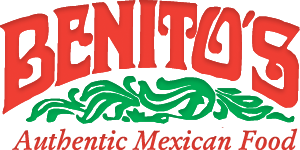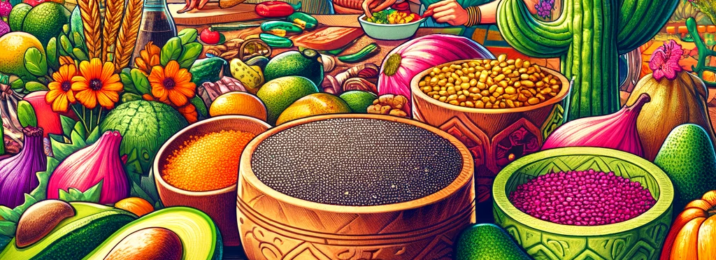Exploring Mexican Superfoods: Nutritional Powerhouses in Traditional Cuisine
Mexican cuisine, often misrepresented as simply a blend of melted cheese and fried meats, is in fact a treasure trove of nutritional powerhouses known as superfoods. These traditional ingredients, deeply rooted in Mexico’s rich cultural heritage, are not only flavorful but also packed with essential nutrients that can significantly enhance overall health and well-being.
The Misunderstood Richness of Mexican Cuisine
Mexican food has long been pigeonholed as unhealthy, but this is a misconception that overlooks the country’s use of superfoods—ingredients that are nutrient-dense and offer various health benefits. These superfoods have been part of the Mexican diet for centuries and are now gaining recognition for their health properties worldwide.
The Rise of Mexican Superfoods
The global health community is increasingly acknowledging the value of traditional Mexican superfoods. These ingredients are being incorporated into diets around the world, not only for their health benefits but also for their environmental sustainability and culinary versatility.
The Superfoods of Mexico
Mexican superfoods range from ancient grains to powerful spices, each with unique nutritional profiles that contribute to a healthy diet.
Chia Seeds: The Tiny Giants
Chia seeds, once a staple in Aztec and Mayan diets, are now lauded for their high omega-3 fatty acid content, fiber, and protein. These small seeds can absorb several times their weight in water, promoting hydration and a feeling of fullness that can aid in weight management.
Amaranth: The Forbidden Grain
Amaranth, revered by the Aztecs but banned by Spanish conquerors, has made a comeback due to its rich nutrient profile. It is a complete protein source and is high in minerals such as calcium, magnesium, and iron. Amaranth also has been shown to have cholesterol-lowering effects.
Spirulina: The Aztec Protein Source
Spirulina, a type of blue-green algae, was a protein staple for the Aztecs. It boasts a high vitamin B content and more protein than beef, making it an excellent supplement for those looking to boost their protein intake without consuming meat.
Cocoa: The Gift from the Gods
Cocoa, cultivated for over 3,000 years in Mexico, is rich in antioxidants and magnesium. It has been linked to lower risks of heart disease and cancer and is also known to help prevent high blood pressure, type 2 diabetes, and depression.
Aloe: The Healing Plant
Aloe vera, commonly used for its skin-healing properties, also offers digestive benefits when consumed. It contains vitamins, minerals, and enzymes that can help soothe the gastrointestinal tract.
Nopales: The Cactus Superfood
Nopales, or prickly pear cactus pads, are a staple in Mexican cuisine. They are high in fiber, antioxidants, and vitamins, and have been shown to have blood sugar-lowering effects, making them beneficial for individuals with diabetes.
Avocado: The Heart-Healthy Fat
Avocados, native to Mexico, are rich in monounsaturated fats, which are heart-healthy. They also contain fiber, potassium, and various vitamins, contributing to cardiovascular health and overall nutrition.
Beans and Corn: The Perfect Pair
Beans and corn, when eaten together, form a complete protein, providing all the essential amino acids necessary for good health. They are also high in fiber and other nutrients, making them a staple in a balanced diet.
Tomatoes: The Antioxidant-Rich Fruit
Tomatoes, a common ingredient in Mexican salsas and dishes, are high in vitamins C and K, potassium, and lycopene, an antioxidant linked to reduced risk of heart disease and cancer.
Chili Peppers: The Spicy Nutrient Boost
Chili peppers are not only known for their heat but also for their high vitamin C content. They also contain capsaicin, which has been studied for its metabolism-boosting and anti-inflammatory properties.
The Health Benefits of Mexican Superfoods
The regular consumption of these superfoods can lead to numerous health benefits, including a strengthened immune system, reduced inflammation, and a lower risk of chronic diseases.
Anti-Inflammatory Properties
Many Mexican superfoods, such as turmeric and chili peppers, contain compounds that have anti-inflammatory effects, which can help in managing conditions like arthritis and heart disease.
Weight Management
Foods high in fiber, such as beans and chia seeds, can aid in weight management by promoting satiety and reducing overall calorie intake.
Heart Health
The monounsaturated fats in avocados and the antioxidants in cocoa contribute to cardiovascular health by lowering bad cholesterol levels and improving blood pressure.
Diabetes Control
The fiber in nopales and beans can help regulate blood sugar levels, making these foods beneficial for individuals with diabetes or those at risk.
Cancer Prevention
The antioxidants found in many Mexican superfoods, such as tomatoes and cocoa, can help protect cells from damage, potentially reducing the risk of cancer.
The Cultural Significance of Mexican Superfoods
Mexican superfoods are not only nutritional gems but also hold cultural significance. They have been part of traditional Mexican diets for centuries and are deeply intertwined with the country’s history and traditions.
Preserving Ancestral Diets
There is a growing movement to reclaim and preserve the ancestral diets of Mexico, which were rich in plant-based foods and diverse crops. This movement is not only about health but also about respecting indigenous knowledge and culinary heritage.
The Impact of Westernization
The introduction of processed foods and Western dietary patterns has led to a decline in the consumption of traditional Mexican superfoods. However, there is a conscious effort to return to these nutrient-dense, culturally significant foods.
The Future of Mexican Superfoods
As awareness of the nutritional and cultural value of Mexican superfoods grows, they are likely to become more integrated into diets worldwide. This integration not only promotes health but also supports sustainable agriculture and respects cultural traditions.
Government and Cultural Initiatives
Efforts by the Mexican government and cultural changes are helping to promote healthy eating habits and the consumption of traditional superfoods. These initiatives are crucial for combating the rise in diet-related diseases and for preserving Mexico’s rich culinary heritage.
The Role of Chefs and Entrepreneurs
Chefs and entrepreneurs are playing a significant role in popularizing Mexican superfoods by incorporating them into modern dishes while maintaining authentic flavors. This approach helps to introduce these foods to a broader audience and encourages their use in everyday cooking.
Conclusion
Mexican superfoods are a testament to the country’s rich culinary history and offer a wealth of health benefits. By incorporating these ingredients into our diets, we can improve our health while also honoring and preserving the cultural significance of traditional Mexican cuisine.
FAQ
What makes a food a “superfood”?
Superfoods are foods that are exceptionally nutrient-dense, offering a high concentration of vitamins, minerals, antioxidants, and other health-promoting compounds.
Can Mexican superfoods fit into a vegetarian or vegan diet?
Absolutely. Many Mexican superfoods, such as beans, corn, chia seeds, and spirulina, are plant-based and make excellent additions to vegetarian and vegan diets.
How can I incorporate Mexican superfoods into my diet?
Mexican superfoods can be added to a variety of dishes, from smoothies (using chia seeds or spirulina) to salads (topped with avocado and tomatoes) and main courses (featuring beans and amaranth).
Are Mexican superfoods suitable for people with dietary restrictions?
Yes, many Mexican superfoods are naturally gluten-free, dairy-free, and suitable for those with various dietary restrictions. Always check with a healthcare provider if you have specific dietary needs.






